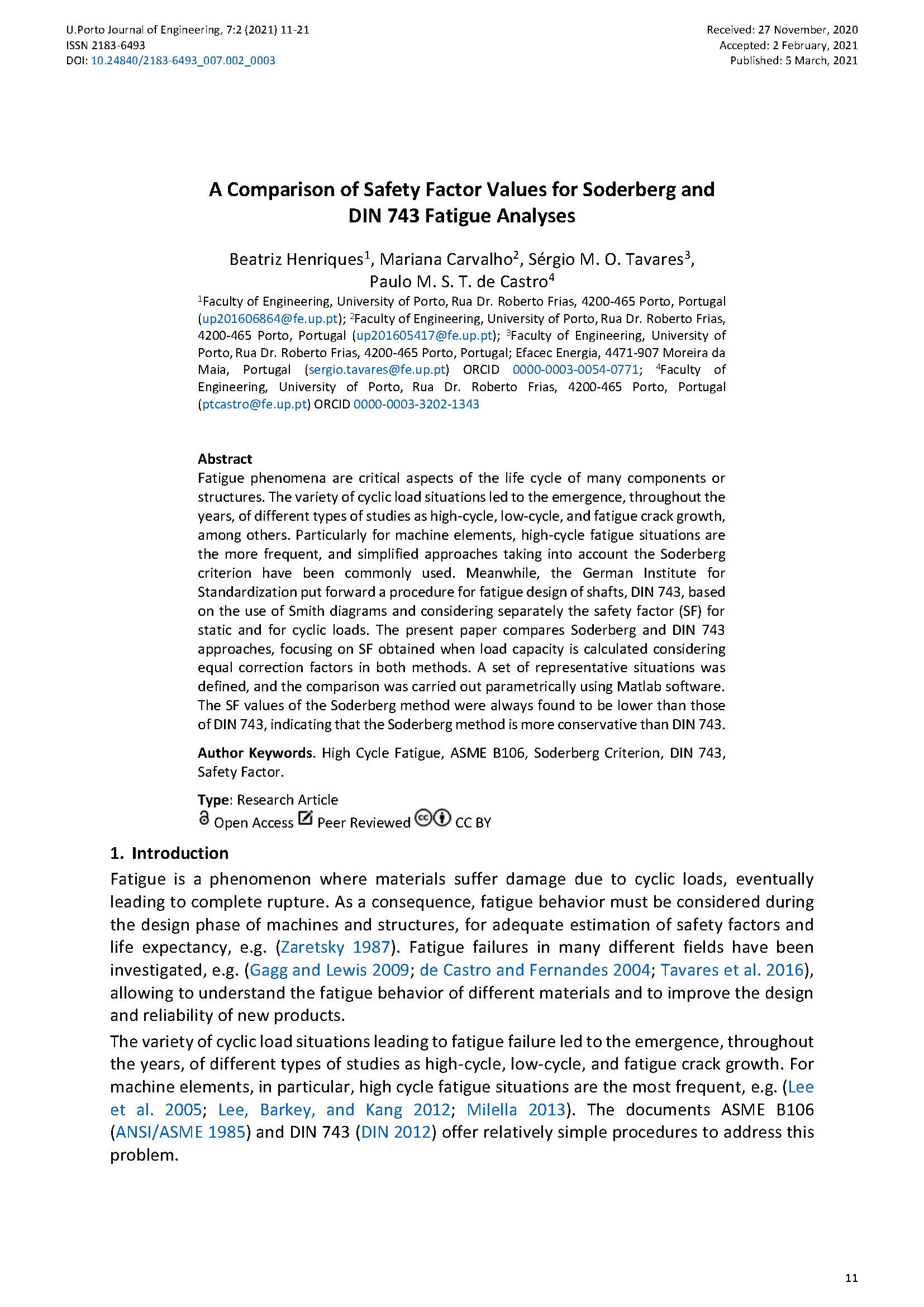A Comparison of Safety Factor Values for Soderberg and DIN 743 Fatigue Analyses
Main Article Content
Abstract
Fatigue phenomena are critical aspects of the life cycle of many components or structures. The variety of cyclic load situations led to the emergence, throughout the years, of different types of studies as high-cycle, low-cycle, and fatigue crack growth, among others. Particularly for machine elements, high-cycle fatigue situations are the more frequent, and simplified approaches taking into account the Soderberg criterion have been commonly used. Meanwhile, the German Institute for Standardization put forward a procedure for fatigue design of shafts, DIN 743, based on the use of Smith diagrams and considering separately the safety factor (SF) for static and for cyclic loads. The present paper compares Soderberg and DIN 743 approaches, focusing on SF obtained when load capacity is calculated considering equal correction factors in both methods. A set of representative situations was defined, and the comparison was carried out parametrically using Matlab software. The SF values of the Soderberg method were always found to be lower than those of DIN 743, indicating that the Soderberg method is more conservative than DIN 743.
Downloads
Article Details

This work is licensed under a Creative Commons Attribution 4.0 International License.
Authors who publish with this journal agree to the following terms:
- Authors retain copyright and grant the journal right of first publication with the work simultaneously licensed under a Creative Commons Attribution License that allows others to share the work with an acknowledgement of the work's authorship and initial publication in this journal.
- Authors grant the journal the rights to provide the article in all forms and media so the article can be used on the latest technology even after publication and ensure its long-term preservation.
- Authors are able to enter into separate, additional contractual arrangements for the non-exclusive distribution of the journal's published version of the work (e.g., post it to an institutional repository or publish it in a book), with an acknowledgement of its initial publication in this journal.
- Authors are permitted and encouraged to post their work online (e.g., in institutional repositories or on their website) prior to and during the submission process, as it can lead to productive exchanges, as well as earlier and greater citation of published work (See The Effect of Open Access).

